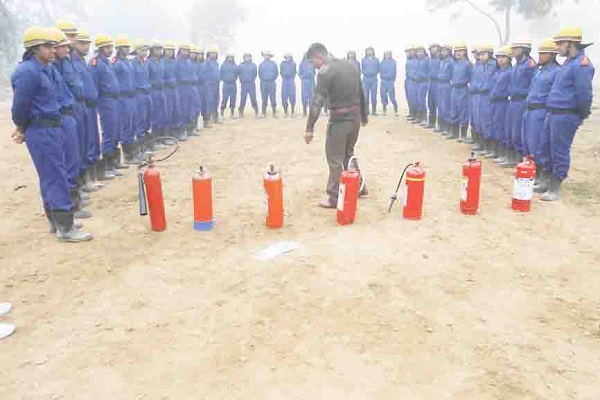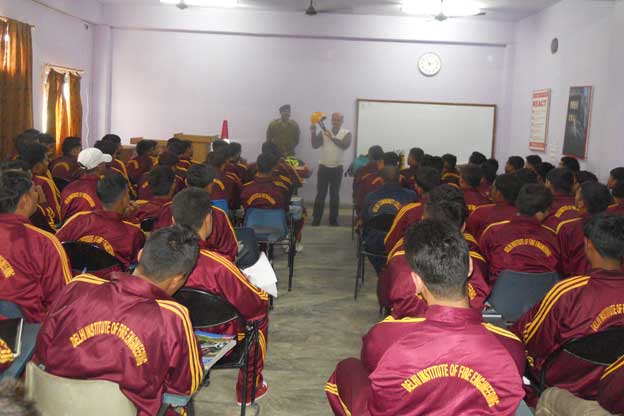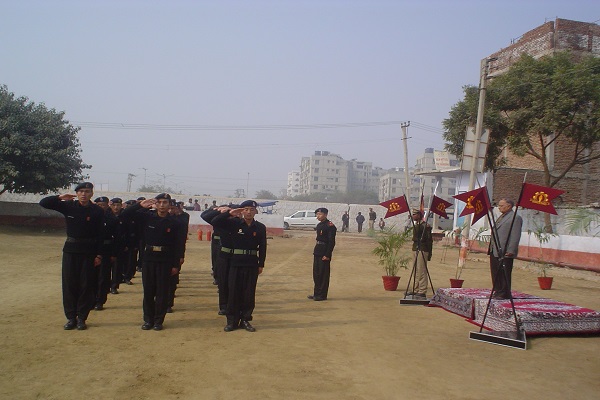

TopInstructors
OnlineCertifications
10000Student Placed
Top Categories
Regular Courses recognized and approved by State Council for Vocational Training (SCVT), Department of Training and Technical Education (DTTE),
Govt. of NCT of Delhi

Welcome to Delhi Institute of Fire Engineering
Fire was discovered by the genetic ancestors of humans. These ancestors are known as Homo erectus in the human evolutionary genus. Homo erectus inhabited the earth around two million years ago, around the same time that there was evidence of use of fire.The control of fire by early humans was a critical technology enabling the evolution of humans. Fire has also influenced human biology, assisting in providing the high-quality diet which has fuelled the increase in brain sizethrough the Pleistocene.In its highest expression, however, Fire is the source of self-discipline, purification and transformation.
The Vedic fire ceremony is an instrument that harnesses this sattvic quality of Fire(Agni). The Vedic fire ritual, known as Homa, Puja or Yajna, is considered sacred.In the Vaishnav branch of Hinduism, Agni or Fire is considered the tongue of the Supreme Lord Narayana, hence all the sacrifices done even to any demigod ultimately is a sacrifice to the Supreme Lord Narayana. The Hindu fire ceremony is a sacred ritual performed by Hindus at all major junctures of life including birth and coming of age ceremonies, weddings, and funerals, as well as on all major religious holidays.In Hinduism, fire is one of five sacred elements of which all living creatures are comprised and is considered an eternal witness essential to sacred religious ceremonies.
Our Industries, Factories, Power Plants and all developing facilities are dependent upon fire (heat/energy) in one way or the other. If the fire is removed from these activities, everything will come to standstill. This is the positive and friendly role of the fire in the life of human beings, but there is a flip side of the coin as well. If proper attention and care is not exercised whilst handling fire then the fire becomes our vicious enemy. An adequate attention and set drill of precautions are required to be taken to tame the fire as a friend of the mankind.
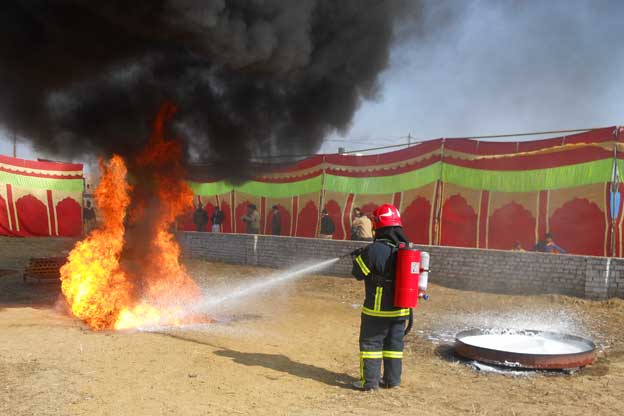
Despite proactive fire safety
Despite proactive fire safety measures being incorporated into the fields of engineering, construction anddesign of buildings; India continues to witness a large number of structural fire accidents every year.Fire policy and mitigation strategies in developing countries are constrained by inadequate information, which is mainly due to a lack of capacity and resources for data collection, analysis, and modeling.Every day, we witness front page news of fire accidents of difference magnitudes in the news papers which is self explanatory story of our ignorance and lackadaisical attitude towards fire prevention and safety education/procedures.Injuries and deaths related to heat and fire raises concern into the current loopholes in the area of firesafety and management practices.
Normal-risk or low fire risk
Buildings may be classified ashigh-risk, normal-risk or low fire risk structures. High-risk structures are often regarded as those housinglarge amounts of combustibles and highly inflammable materials; furthermore they may offer rapid spreadof fire, heat or smoke throughout the building. Normal-risk structures are those characterized by sufficientamounts of combustibles or flammable materials but wherein the fire would likely remain confined tothe place of origin and spread at a slower pace. However, low-risk structures are those wherein thepotential for fire incidents are much lesser and there are minimal chance for loss of lives.
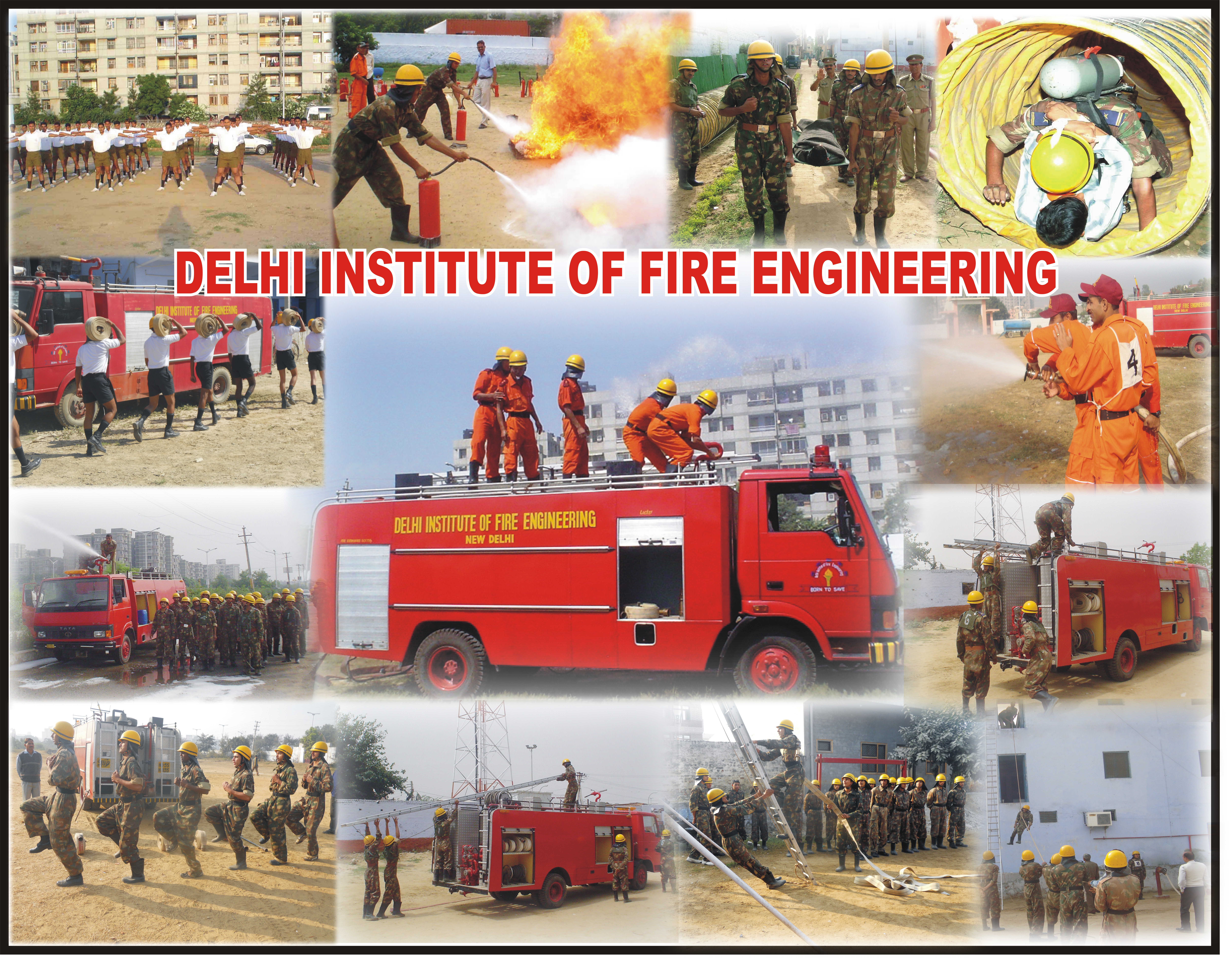
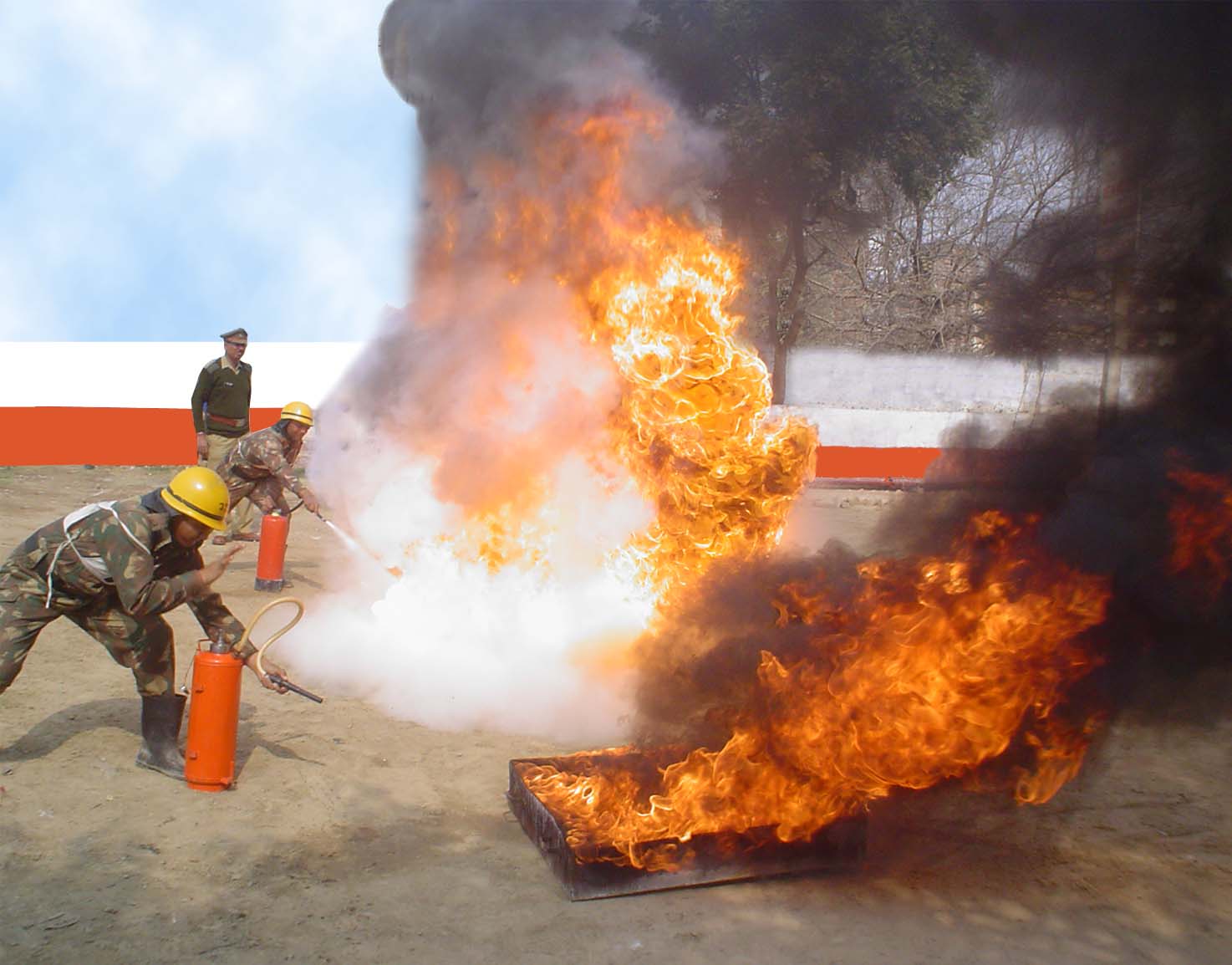
Fire Safety management
The national and state governments have enacted varied legislations for fire safety and managementwhich include codes and standards, fire safety regulation and compliance laws, fire brigades and stationsin localities and educational campaigns. While general fire code regulations and permits are necessaryfor buildings during construction phase, the regular maintenance of these fire regulations is oftenquestionable. Through existing literature, it is observed that structural building fires in India have resulteddue to reasons viz. poor construction plans, illegal extension of structures violating building laws and firecodes; non-functioning fire escape plans; lack of preparedness to handle fire emergencies, lack ofascertaining responsibility and legal action. Contemporary structures are constructed on prevailing floor plans by flouting conventional norms and fire regulations and pose maximum risk to fire safetyinitiatives, thus continuous monitoring is required.
Globally, research in fire safety is focused on prevention through riskassessment and safety audits. However, the trend is still nascent in India. Fire safety regulations are followed differently depending on the type of industry,thus leading to practice of non-compliance in some workplaces in India. While majority of the officesfollow the norms, some fall short in terms of regular servicing and maintenance of the safety devices, conducting fire drills and training their employees. It isseen that a few offices do not havedesignated fire exits for emergencies. There is a need for constant vigilance of illegal constructions andextensions of existing buildings done by unscrupulous elements of the society in order for maximizingprofit or gain. Violation of construction policies due to space constraints, mixed occupancies and humangreed for profit are prevalent reasons for most urban fire accidents. Negligence and apathy in theenforcement of building regulations often lead to undesirable workplaces, thus posing a high risk forhazard.
A lack of training and procedures to be followed in that instance amongst workplace employees can leadto considerable psychological strain on individual coping mechanism in dealing with the fire. Fire safety awareness at the community level is of utmost importance tobetter tackle and mitigate fire accidents. Employees should be trained in advance to initiate fire-fighting methods in the event of an occupational fire accident. The employersshould plan fire drills and train their staff on the use of fire extinguishers enabling better assistance toother occupants in the buildings to reach safety spaces in the event of a fire. The employees shouldalso be familiarized with the location of fire safety systems like fire extinguishers and exits. Fire safetyinformation should be displayed in clear language and signage at observable locations throughout theoffice.
Pick A Course To Get Started
Student Achievement
.K
Student Enrolled
.K
Class Completed
.%
Satisfaction Rate
.+
Top Instructors
What Our Students Have To Say
we provide professional productive and reliable fire safety course
View AllFOUNDER MEMBERS
Internatinal Clients





Domestic Clients
We take immense pride in serving our domestic clients with unwavering dedication and a commitment to excellence.Our mission has always been to provide top-tier products and services to our clients across the nation, and we are delighted to have built lasting relationships with a wide range of domestic clients.




















